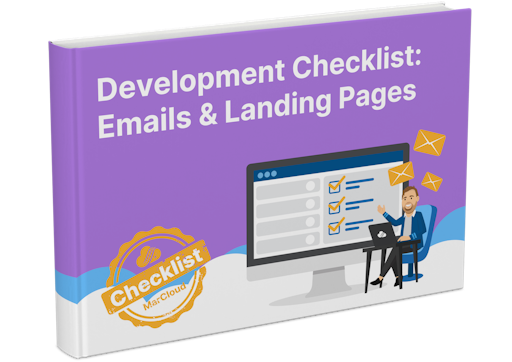MCAE forms vs. form handlers
We kicked off the webinar by explaining the differences between MCAE forms and form handlers. Each serves specific purposes and brings distinct advantages to your data collection and lead engagement strategy in Salesforce. In a nutshell:
Forms: Ideal for fast deployment, MCAE forms offer built-in features such as progressive profiling, bot protection, and straightforward setup. These forms are perfect when you need an efficient and effective solution quickly.
Form Handlers: Beneficial when integrating pre-existing website forms with MCAE, form handlers enable data transfer to Salesforce without requiring a complete rebuild of the original forms.
Read a more detailed comparison of MCAE forms vs form handlers, plus tips.
We also highlighted the power of progressive profiling in forms, a technique for gathering different pieces of prospect information over multiple visits, rather than asking for everything upfront. This method keeps forms short and helps reduce submission friction, enhancing user experience and boosting conversion rates.
Going beyond out-of-the-box features with scripts
While MCAE forms come with numerous built-in (or out-of-the-box) features, we discussed how complex use cases sometimes demand additional customisation.
Custom scripts can help to extend form capabilities, enabling marketers to create tailored solutions that surpass standard MCAE functionality.
Adding scripts can enhance the functionality of your forms in ways that align closely with business objectives, allowing for customisations such as time-zone filtering, dynamic form fields, and conditional redirects. These enhancements help forms deliver a more targeted user experience while reducing workload in the back-end.
Practical use cases for MCAE forms & scripts
Here’s where the added value really kicks in! Throughout the webinar, we presented several real-world use cases that demonstrate the true potential of MCAE forms and form handlers, particularly when enhanced with scripts.
1. Spam management
Spam submissions can be a headache for marketers. We shared effective techniques for spam management using hidden fields and timestamp tracking to detect suspicious behaviour. For instance, if a form is submitted multiple times from the same user within odd hours (like 1–4 a.m.), the submission can be flagged as potential spam, helping to keep lead data clean and relevant.
2. Reducing form clutter through consolidation
Managing a large number of forms can quickly become overwhelming. I recommended consolidating forms using hidden fields, which can reduce clutter and streamline data tracking. Instead of having separate forms for each downloadable asset, for example, one form can dynamically populate based on user input, allowing a single form to serve multiple resources. This approach simplifies data capture and reduces the burden of managing multiple forms.
3. Limiting the number of downloads
During the webinar, I illustrated a scenario where a client wanted to limit the number of downloads per user, to encourage alternative actions, such as booking a demo. The solution? Conditional completion actions, scripting, and incremental fields were used to track each user’s downloads. Once a user hits the set limit, they’re presented with a different call-to-action, like scheduling a meeting instead. This approach not only supports lead qualification but also helps guide users towards higher-value engagements.
4. Enhanced tracking with Google Analytics (GA4) integration
Tracking form submissions accurately is essential for effective analytics but MCAE forms are notoriously tricky to track because they’re embedded in web pages as iframes. If you’ve yet to get form tracking for GA4 in place, check out this step-by-step guide.
In the webinar, I demonstrated how custom scripts link MCAE form submissions with Google Analytics (GA4) events, assigning submissions to the correct brand account for multi-brand businesses. This setup ensures accurate, brand-specific insights, maintaining clarity in analytics and allowing businesses to measure engagement across multiple brands under a single MCAE account.
5. Contextual field display for product-specific forms
When different product lines need unique information, dynamic fields can adjust form questions based on the product page the user is on. I showed how MCAE forms can use URL structures or hidden fields to display product-relevant questions, ensuring that data collection remains precise and contextually relevant.
Enhancing data quality & user experience






